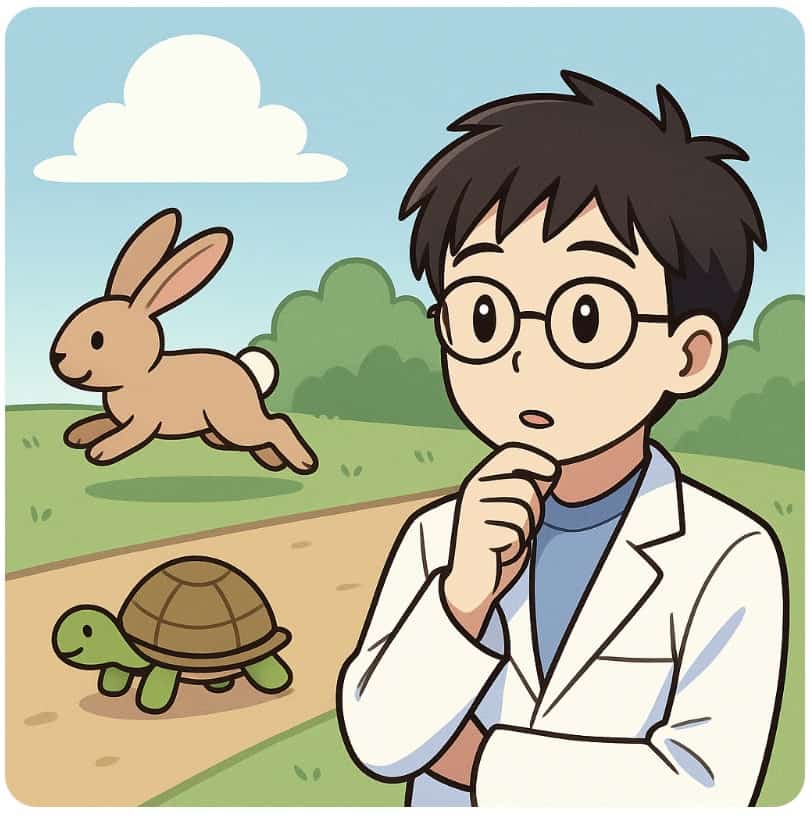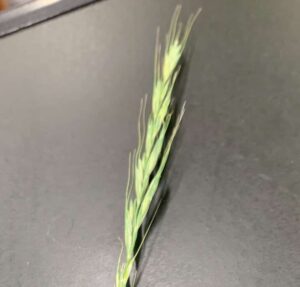The Physics of Fables: Graphing the Tortoise and the Hare’s Hidden Science
I’m Ken Kuwako, your Science Trainer. Every Day is an Experiment.
The fable of “The Tortoise and the Hare” is one we all heard as children—a race between the quick-footed hare and the slow-but-steady tortoise. But did you know that when viewed through a “scientific lens,” this story becomes an excellent teaching tool for understanding the laws of motion? This time, let’s analyze this famous race using two different types of graphs. You’ll be surprised by the scientific fun hidden beneath the simple narrative.
“Visualize” Motion with Graphs
To truly understand how an object moves, a graph is far more effective than a verbal description. In the world of physics, motion is often represented using two primary types of graphs:Position-Time Graph ($x$-$t$ graph): Shows how the object’s position changes over time.Velocity-Time Graph ($v$-$t$ graph): Shows how the object’s speed (velocity) changes over time.So, what shape would the graph of the Tortoise and the Hare’s race take? Take a moment to draw and visualize it yourself.The Hare’s graph would be quite dramatic: a sharp increase in speed right after the start, then a sudden drop to zero speed when it takes a nap, and finally, a frantic burst of speed at the end. In contrast, the Tortoise’s graph would be a low, flat, single line, showing that its speed remained constant from start to finish. The distinct personalities of the two competitors are clearly reflected in the shape of their graphs!
The Secret Hidden in the “Area”
Let’s introduce a slightly more advanced concept here. A fascinating mathematical property is hidden within the velocity-time ($v$-$t$) graph. The area enclosed by the velocity-time graph line and the horizontal axis (the time axis) represents the object’s Total Distance Traveled.This insight is a huge hint for sketching those graphs!At first glance, the Hare’s graph and the Tortoise’s graph look completely different. However, if you consider the total time it took for each of them to reach the finish line, the area under both graphs (the distance traveled) must be identical. Why? Because both the Hare and the Tortoise covered the exact same distance from the start line to the finish line.
The Fun of Scientific Storytelling
“Different shapes, but the same area.” This mathematically proves that no matter how fast you run, if you stop along the way, you will only cover the same distance as an opponent who proceeds slowly but steadily. When you translate a familiar story like this into graphs, doesn’t it make a simple tale look like an introduction to concepts like “vector addition” or “integration (area calculation)”? Try graphing other stories or everyday movements to uncover the scientific laws hidden behind them!
Contact and Requests
Bring the wonder and fun of science closer to you! I’ve summarized easy, enjoyable science experiments you can do at home, along with tips. Feel free to search around!・The content of my Science Idea Book is now available as a book. Details here・For information on the operator, Ken Kuwako, click here・For various requests (writing, lectures, experiment classes, TV supervision, appearances, etc.), click here・Article updates are distributed on X!
![]() The Science Idea Channel streams experiment videos!
The Science Idea Channel streams experiment videos!

